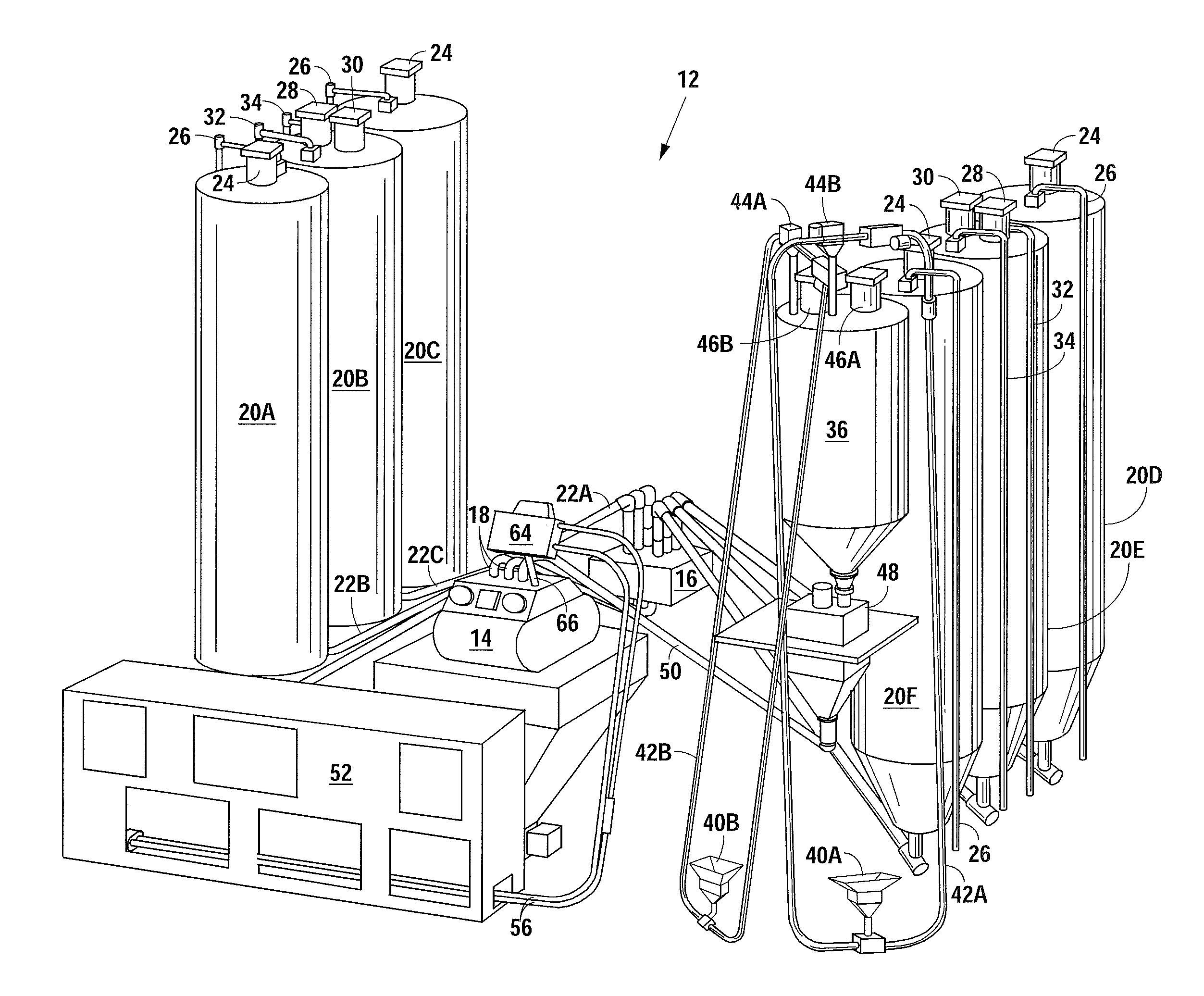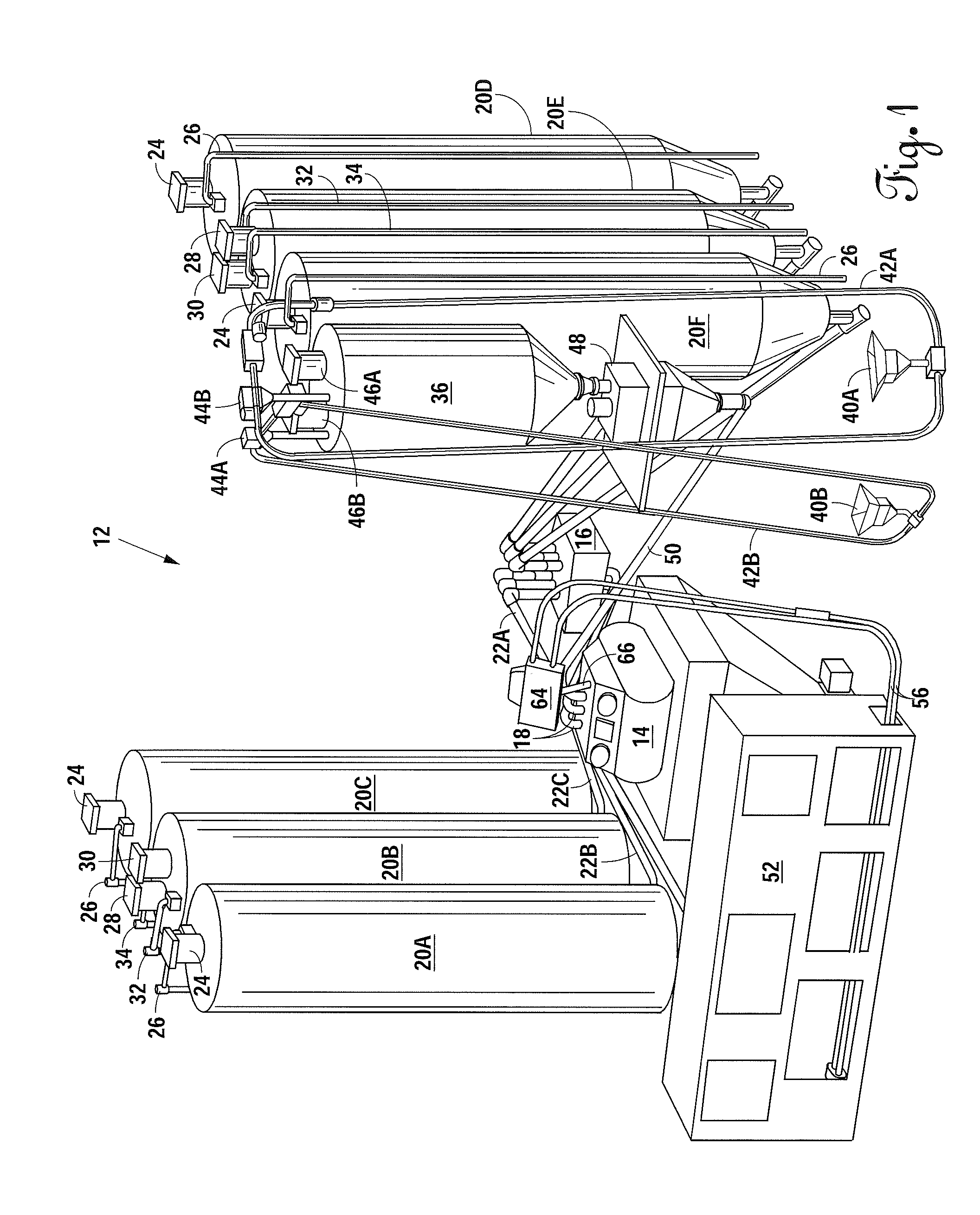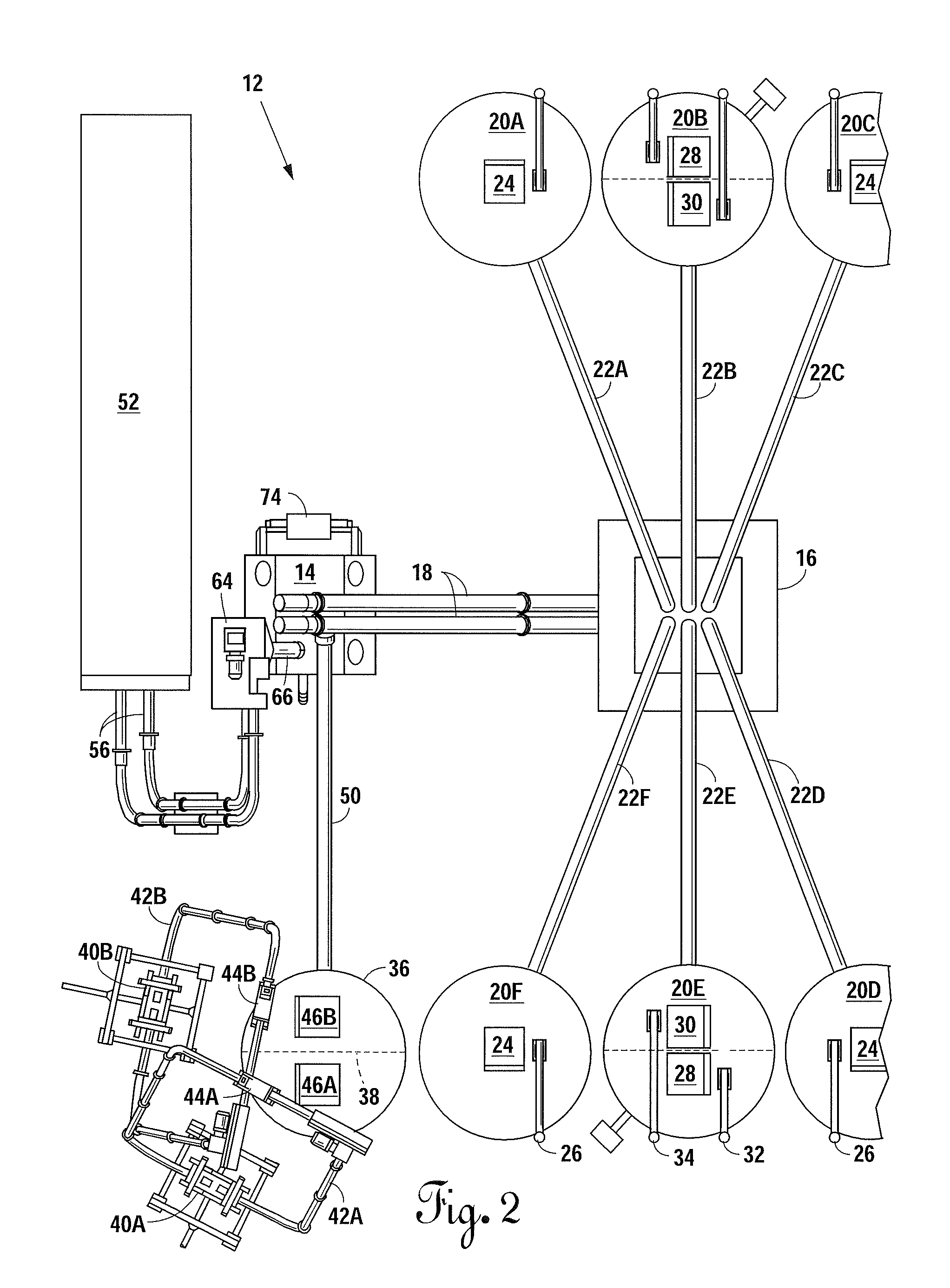Atmospheric Storage Mechanical Weight Batch Blending Plant
a technology of atmospheric storage and mechanical weight, applied in clay preparation equipment, chemistry equipment and processes, sold ingredients supply equipment, etc., can solve problems such as poor set strength, unscientific and haphazard blending methodology, and unfavorable environmental protection
- Summary
- Abstract
- Description
- Claims
- Application Information
AI Technical Summary
Benefits of technology
Problems solved by technology
Method used
Image
Examples
Embodiment Construction
[0028]Referring now to FIGS. 1 and 2 in combination, an atmospheric storage mechanical weigh batch blend plant, representing by reference numeral 12, is shown. All of the ingredients of the cement recipe are mechanically forced together inside of the blender 14.
1. Bulk Materials
[0029]The larger constituent quantities of materials that are needed in a dry pre-blended cement, which are referred to as bulk materials, are stored in atmospheric bulk storage tanks 20A-20F. Bulk materials are received from bulk weigh batcher 16 via dual screw transport augers 18. Mechanical screw augers 22A-22F feed preselected bulk materials from either bulk storage tanks 22A-22F, respectively, into the bulk weigh batcher 16. Only preselected amounts of each bulk material from bulk storage tanks 20A-20F is fed into the bulk weigh batcher 16 as is determined by weight. Thereafter, the weighed amount of each bulk material from bulk storage tanks 20A-20F is fed via dual screw auger 18 into the blender 14.
[00...
PUM
| Property | Measurement | Unit |
|---|---|---|
| depths | aaaaa | aaaaa |
| weight | aaaaa | aaaaa |
| mechanical | aaaaa | aaaaa |
Abstract
Description
Claims
Application Information
 Login to View More
Login to View More - R&D
- Intellectual Property
- Life Sciences
- Materials
- Tech Scout
- Unparalleled Data Quality
- Higher Quality Content
- 60% Fewer Hallucinations
Browse by: Latest US Patents, China's latest patents, Technical Efficacy Thesaurus, Application Domain, Technology Topic, Popular Technical Reports.
© 2025 PatSnap. All rights reserved.Legal|Privacy policy|Modern Slavery Act Transparency Statement|Sitemap|About US| Contact US: help@patsnap.com



